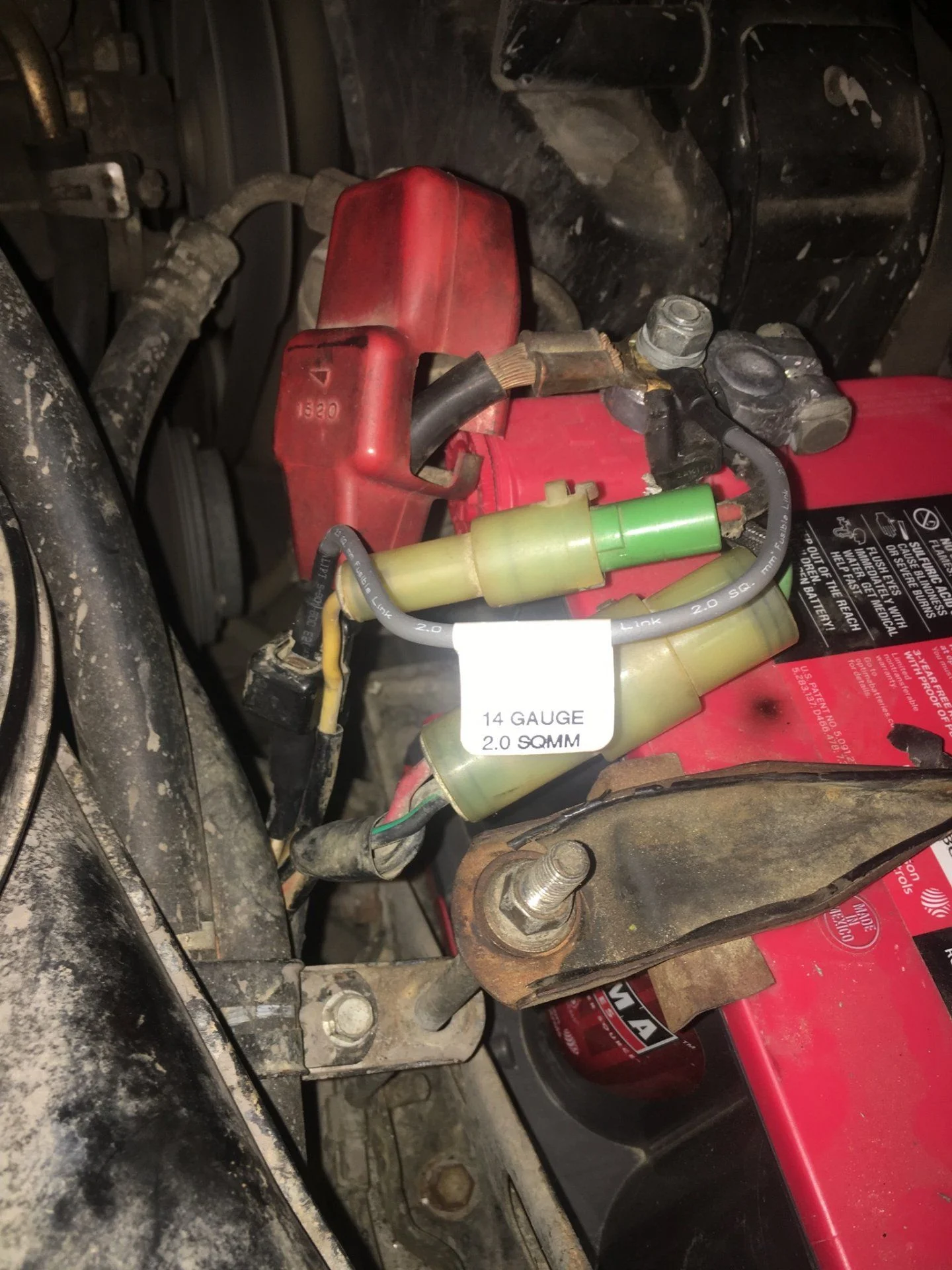At least that's what it seems to be.
Assuming the wiring between the '81 diagram holds true for an '84, the problem lies within the circuit with the white fusible link, which includes the alternator, and fuses engine, defog, A/C, Stop, headlight cleaner (no fuse) tail, and dome, in that order. we can rule out the engine because I now have a stand-alone fuel injection harness, and the original engine harness plugs are capped and out of use, minus the +12v for the old distributor which is currently used to throw a relay for the FI.
It's also an intermittent problem, so it's been tough to narrow down, but when it's present i know this so far: When I jump the inspection light between ground and thedome or tail fuses (EDIT: turns out this happened with all of the listed fuses, but like I said, it was an intermittent problem), everything in that fusible link looses power. when I take the light off, power is not immediately restored (restoration time not consistant) and no fuses are blown. during this time there is no power at the alternator charge terminal (engine off).
part of this seems characteristic of a fusible link, but how could grounding a hot wire via a known good light ever be a problem? should I try to find the joint where the white wire splits to become either the dome or tail circuits?

Assuming the wiring between the '81 diagram holds true for an '84, the problem lies within the circuit with the white fusible link, which includes the alternator, and fuses engine, defog, A/C, Stop, headlight cleaner (no fuse) tail, and dome, in that order. we can rule out the engine because I now have a stand-alone fuel injection harness, and the original engine harness plugs are capped and out of use, minus the +12v for the old distributor which is currently used to throw a relay for the FI.
It's also an intermittent problem, so it's been tough to narrow down, but when it's present i know this so far: When I jump the inspection light between ground and the
part of this seems characteristic of a fusible link, but how could grounding a hot wire via a known good light ever be a problem? should I try to find the joint where the white wire splits to become either the dome or tail circuits?
Last edited:

 ).
).